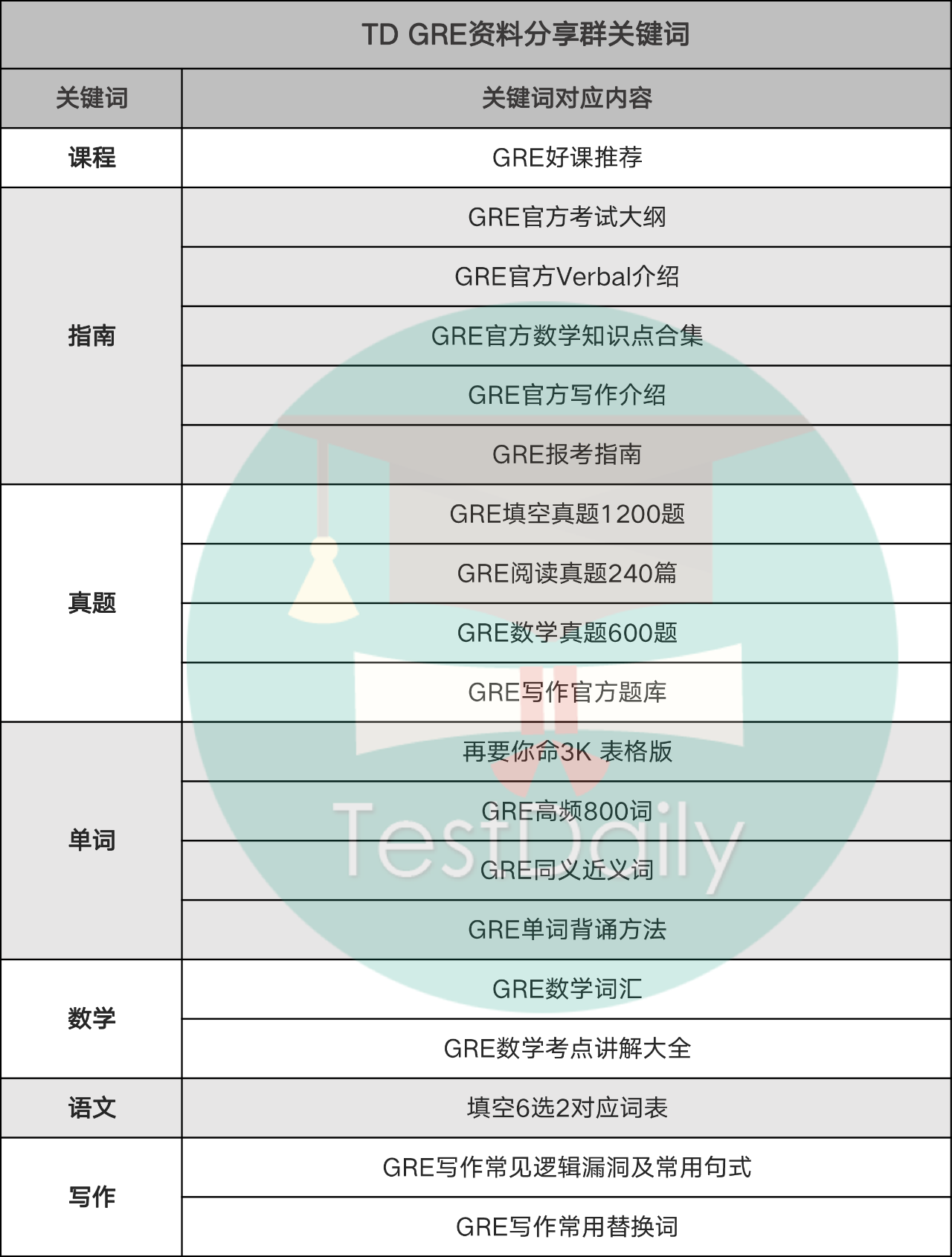GRE阅读机经Passage 22
Until around 1930 few United States Civil War historians paid much attention to Southerners who opposed the 1861-1865 secession from the United States by a confederacy of Southern states. Southern historians clung instead to a notion of the South’s unanimity in the face of Northern aggression. Only when scholars such as Lonn decided to examine this side of the war did historian of the Confederacy begin to recognize the existence of Southerners loyal to the Union (Unionists). While these early historians of Southern dissent broke new ground, they also reproduced Confederate authority’s negative view of loyalists as shady characters driven by dubious motives. Even Tatum, who took a largely sympathetic attitude toward loyalists, tended to lump them into nebulous categories, offering broad generalizations that ignored the particulars of Unionists’ identities and experiences. This early-twentieth-century historiography nonetheless represented the leading research on dissent in the South until the 1960s and 1970s. Spurred by the advent of social historical methods, a new generation of historians found Unionists interesting as manifestations of the Confederacy’s internal weaknesses. Focusing on the Appalachian Mountain and upper South regions of the Confederacy, these scholars argued that there was a profound divide among Southern Whites between those who benefited economically from slave-run plantations and those who did not. One such historian was Escott, who emphasized regional and economic conflict among Southerners. Escott cast Unionists and other dissenters as antiplanter mountaineers who could not, by reason of economic and social alienation, identify with the proslavery Southern cause. This theme has heavily influenced the work of subsequent scholars, who commonly place Unionists at the extreme end of a continuum of class-based Confederate disaffection that was ultimately responsible for the South’s collapse. Because the driving force behind such inquiries into loyalist history has been a desire to explain Confederate ideology, politics, and defeat, emphasis has been placed on the ways loyalist Southerners diverged from the political and economic mainstream of Confederate nationalism. Only recently have some Civil War historians begun to make Unionists and their experiences, rather than the Confederate state, the center of inquiry. These scholars have done intensive community and local studies of dissenting groups that take into account a range of social and cultural, as well as military and political, factors at work on the Southern home front. Hoping to better understand who remained loyal to the Union during the war, these historians have sought to explain the Civil War’s underlying character, dimensions, and impact in particular counties or towns, especially in the upper South and Appalachia. This relatively new trend has stressed the particular, delved into the complexities of political allegiances on the home front, and, as Sutherland notes, highlighted “the gritty experience of real people”.文章解析
第一自然段:
Until around 1930 few United States Civil War historians paid much attention to Southerners who opposed the 1861-1865 secession from the United States by a confederacy of Southern states. Southern historians clung instead to a notion of the South’s unanimity in the face of Northern aggression. Only when scholars such as Lonn decided to examine this side of the war did historian of the Confederacy begin to recognize the existence of Southerners loyal to the Union (Unionists). While these early historians of Southern dissent broke new ground, they also reproduced Confederate authority’s negative view of loyalists as shady characters driven by dubious motives. Even Tatum, who took a largely sympathetic attitude toward loyalists, tended to lump them into nebulous categories, offering broad generalizations that ignored the particulars of Unionists’ identities and experiences. 白话版讲解: 1861年到1865年,南方各州组成了一个confederacy,从United States退出了。这个“退出”,英语有一个专门的单词,叫secession。有些南方人是反对secession的。在1930年以前,研究美国内战的历史学家里面,只有少数几位关注这些反对secession的人;南方的历史学家坚持这样一个观点,就是南北内战时,是北方在对南方搞aggression,南方人面对北方的aggression,态度是一致的(都一致反对北方,都一致赞同secession)。直到一些学者(比如Lonn)决定认真研究这些反对secession的南方人(this side of the war),研究南方邦联(the Confederacy)的历史学家才开始承认确实存在一些忠于北方联邦(the Union)的南方人(这些南方人也被称为Unionist)。这些忠于北方联邦的南方人,是南方的dissent(持不同政见者)。尽管这些最早开始关注南方dissent的历史学家做出了新发现,但他们也赞同当年南方邦联政权当局对这些dissent的负面看法,他们也认为这些dissent是些由可疑动机驱动的品质可疑的家伙。即使有一个叫Tatum的历史学家对这些loyalist(这里我们要推测出文章中出现的loyalist和unionist还有dissent,基本上是指同一批人)主要持一种同情的态度,但是Tatum也没有考虑、或者说忽视了这些loyalist的个体和个体之间在身份和经历上的差异,而是也做了太宽泛的归纳,也把这些人都笼统地归为一类叫loyalist的人了。(其实这些loyalist各自身份不同,经历不同,这些人都反对secession,但是是出于各自不同的原因,连Tatum也ignore了这一点)。 注解: lump vt. 把…混到一块儿,把…合并在一起 put in an indiscriminate mass or group; treat as alike without regard for particulars 例句: Hong Kong and Bangkok tend to be lumped together in holiday brochures. 香港和曼谷本来不是同一类地方,但在宣传假日度假地的宣传小册子中,两个地方总是被归为一类。 All the children are lumped together in one class, regardless of their ability. 孩子之间的能力是有差异的,但是分班的时候不管这个,所有孩子都被并到一个班。第二自然段第一部分:
This early-twentieth-century historiography nonetheless represented the leading research on dissent in the South until the 1960s and 1970s. Spurred by the advent of social historical methods, a new generation of historians found Unionists interesting as manifestations of the Confederacy’s internal weaknesses. Focusing on the Appalachian Mountain and upper South regions of the Confederacy, these scholars argued that there was a profound divide among Southern Whites between those who benefited economically from slave-run plantations and those who did not. 白话版讲解: 但是,二十世纪早期的历史编撰(指把所有南方的loyalist都笼统地归为一大类、不去研究其中的个体的那种做法),一直到1960年代和1970年代,仍然代表了关于南方的dissent的最重要的研究。在被新出的一些社会历史研究方法(根据advent,可以判断这些方法是一些新的研究方法)刺激之后,也就是大概是1970年代之后,(终于)出现了新一代的历史学家。这些历史学家对南方的unionist感兴趣,(但)他们认为这些unionist之所有令人感兴趣,是因为他们认为这些unionist的存在是表明南方的Confederacy内部有弱点的迹象。这些历史学家将研究聚焦于南方邦联境内的Appalachian Mountain 和upper South regions,提出理由想证明这样一个论点:在南方白人内部,存在一种深刻的分歧。有些南方白人从依靠奴隶制运营的种植园在经济上获利(这些人就维护奴隶制,支持secession),有些南方白人并不从奴隶制中获利(这些人就不支持secession)。第二自然段第二部分话:
One such historian was Escott, who emphasized regional and economic conflict among Southerners. Escott cast Unionists and other dissenters as antiplanter mountaineers who could not, by reason of economic and social alienation, identify with the proslavery Southern cause. This theme has heavily influenced the work of subsequent scholars, who commonly place Unionists at the extreme end of a continuum of class-based Confederate disaffection that was ultimately responsible for the South’s collapse. Because the driving force behind such inquiries into loyalist history has been a desire to explain Confederate ideology, politics, and defeat, emphasis has been placed on the ways loyalist Southerners diverged from the political and economic mainstream of Confederate nationalism. 白话版讲解: Escott就是持这种观点的一位历史学家。他强调,在南方内部,虽然同样是南方人,但因为生活地区和经济状况不同,人们对支持还是反对secession的观点并不一致。Escott认为那些支持北方union的南方人和南方其他持不同政见者(如住在山区,反对种植经济的人),都是些在经济上或社会上被(南方主流)疏远、排斥的人,所以他们对支持奴隶制的南方的事业(从北方脱离、独立),并不认同。这一观点对后来有很多学者写的著作都产生了重大的影响。这些学者通常认为南方有一系列、一大帮基于阶级划分的对南方confederacy不满的人(dissent),这些dissent中对南方confederacy最不满的是unionist;这一系列、一大帮不满的人群,最终对南方confederacy的崩溃倒台负有责任。由于持这样一种观点的历史学家,在研究loyalist这一人群的历史时,驱使他们进行这种研究的动力是为了解释南方confederacy的意识形态是怎样的,政治原则是怎样的,为什么会被北方击败,所以他们在研究时把重点放在了南方的loyalist与南方持邦联自决主义观点(认为邦联有权从union独立)的政治和经济主流人群在哪些方面有所不同上。第三自然段第一部分:
Only recently have some Civil War historians begun to make Unionists and their experiences, rather than the Confederate state, the center of inquiry. These scholars have done intensive community and local studies of dissenting groups that take into account a range of social and cultural, as well as military and political, factors at work on the Southern home front. 白话版讲解: 直到最近,才有一些研究美国内战的历史学家开始以南方的unionist和他们的经验为研究中心,而不是像以前那样以邦联为研究中心。这些学者做了基于社区和基于dissent所在区域本地情况的集中研究,把一系列对南北内战时处于南方后方的民众(the home front)有影响的一些社会、文化及军事政治方面的因素都纳入考虑。 注解: the home front 战时位于后方的民众 the people who stay in a country and work while that country's soldiers are fighting in a war in a foreign country第三自然段第二部分:
Hoping to better understand who remained loyal to the Union during the war, these historians have sought to explain the Civil War’s underlying character, dimensions, and impact in particular counties or towns, especially in the upper South and Appalachia. This relatively new trend has stressed the particular, delved into the complexities of political allegiances on the home front, and, as Sutherland notes, highlighted “the gritty experience of real people”. 白话版讲解: 这些历史学家想更好的理解那些在南北内战时忠于北方union的人,于是就寻求解释内战在南方具体某个县或某个镇(尤其是位于upper South和Appalachia地区的县、镇)有什么样的潜在特征、范围,对这些县、镇产生了什么样的影响。这一相对较新的研究趋向,强调具体情况,深入研究了后方民众的忠诚的各种复杂情况,并且,用Sutherland的话说,“突出了真实人的顽强的经验”。(这里要知道Sutherland又是另一个历史学家或者历史评论家)题目解析
1. The primary purpose of the passage is to A. summarize a particular debate among historians. B. trace the evolution of a particular area of historical study. C. challenge a common misconception about a particular historical period. D. identify flaws in a particular approach to the study of a historical subject. E. explain why a particular historical question has received little scholarly attention. 本题答案:B白话版讲解:
这种问全文修辞功能的题目,有一种解题方法是搞清楚每个选项中的动词的内涵是什么意思,即到底怎样的内容是在challenge,怎样的内容是在explain,怎样的内容是在trace。 具体到这篇文章,我们可以看到,文章有一条比较清晰的时间线。 文章先讲了1930年代以前,第一波历史学家,大都不关注南方那些反对secession的人。南方的历史学家坚持这样一个观点,就是南北内战时,是北方在对南方搞aggression,南方人面对北方的aggression,态度是一致的(都一致反对北方,都一致赞同secession)。 在1930年以后,第二波历史学家(比如Lonn和Tatum),虽然可以关注这些南方的dissent了,但都认为这些dissent是些由可疑动机驱动的品质可疑的家伙。且把这些人全部划分成一大类。 大概是在1970年代之后,(终于)出现了新一代的历史学家(比如Escott)。这是文章出现的第三波历史学家。这些历史学家认为dissent是因为生活地区和经济状况不同而不赞同secession,但是这些历史学家的研究以confederacy而不是以dessent本身为研究中心。 最后是recently,第四波历史学家,终于开始注意具体情况具体分析,以dissent本身为研究中心,强调研究每个人的个人经历。 选项B中的trace这个单词本身就有从时间上去追溯的意思。所以可以比较快地选出B,trace the evolution……。 注解:trace 追溯(起源或发展) find or describe the origin or development of 2. The passage suggests that “some Civil War historians” (Paragraph 3) would probably agree with which of the following statements about Southern Unionists? A. Their economic circumstances were more significant than their social and cultural identities in determining their dissent from the Confederate cause. B. Their significance to historians lies mainly in what their actions reveal about the mainstream of Confederate nationalism from which they departed. C. Their political allegiance must be understood in relation to specific local factors that affected their lives during the Civil War period. D. They were more likely to be from areas outside the upper South and Appalachia than were supporter of the Confederate cause. E. They were more likely to be from economically privileged groups than were supporters of the Confederate cause. 本题答案:C白话版讲解:
问第三自然段提到的“一些研究美国内战的历史学家”,很可能会同意下列哪一个关于南方unionist的说法? A“这些南方的unionist,之所以成为dissent,是因为经济或社会文化方面的因素决定。其中经济处境方面的因素比社会和文化身份方面的因素,更重要” 文章第三自然段没有比较经济和社会、文化因素。所以A选项错误。 B“对历史学家来说,这些南方的unionist的主要意义在于他们的行为可以揭示关于持邦联自决主义观点(认为邦联有权从union独立)的政治和经济主流人群的一些东西” 这是第二自然段那些历史学家的观点,不是第三自然段那些历史学家的观点。所以B选项错误。 C“这些南方的unionist的忠诚,必须和一些在南北战争时期对其生活产生影响的因素联系起来理解” 根据文章第三自然段第二部分,C选项正确。 D“这些南方的unionist比支持邦联的南方人,更有可能来自the upper South和Appalachia以外的地方” 根据文章第三自然段第二部分,这些unionist应该就是来自the upper South和Appalachia这两个地方的比较多,所以D选项错误。 E“这些南方的unionist比支持邦联的南方人,更有可能来自经济上有特权的人” 选项中的economically privileged groups应该是指从奴隶制中获利的人。根据文章第二自然段第一部分,E选项错误。 3. The passage suggests which of the following about histories of the Civil War written before 1930? A. Some took a fairly sympathetic view of Southern Unionists. B. Interest in these histories has been revived by the work of recent historians C. Most offered little analysis of the lives and motives of Southern Unionists. D. Many tended to group Southern Unionists into broad categories that obscured their differences. E. Few accepted the idea that the South was politically unified during the Civil War. 本题答案:C白话版讲解:
问文章暗示了下列哪一关于1930年前写的关于美国内战的书的说法? A选项是讲历史学家Tatum,Tatum是1930年以后的,所以错误。 B选项讲“最近的历史学家的著作revive了1930年前的著作”,可是文章说的是这两者的兴趣不一样,而不是前者revive了后者。所以B选项错误。 C说“大部分对南方unionist的生活和动机的分析很少”,符合文章第一自然段,1930年以前,历史学家很少关注这一人群,所以很少分析他们的生活和动机。C选项正确。 D选项说的也是历史学家Tatum,Tatum是1930年以后的,所以D错误。 E选项。根据文章第一自然段第二句话,1930年前的南方历史学家坚持认为南方有一个unanimity。而E选项说是Few……unified,正好说反了。所以E选项错误。 4. Which of the following best describes the function of the highlighted sentence? A. It challenges a common misconception about the motives driving an influential group of Civil War historians. B. It describes a major contribution of the Civil War historians of the 1960s and 1970s that inspired the next generation of scholars. C. It calls attention to aspects of the Confederate cause that were alienating to those Southerners who remained loyal to the Union. D. It identifies a tendency in Civil War scholarship that more recent scholarship has moved away from. E. It explains how ideological and political aspects of the Confederacy make loyalist Southerners to reject the Confederate cause. 本题答案:D白话版讲解:
问第二自然段最后一句话emphasis has been placed on the ways loyalist Southerners diverged from the political and economic mainstream of Confederate nationalism的修辞功能。 这句话是在讲大概是在1970年代之后,(终于)出现了新一代的历史学家(比如Escott),这是文章出现的第三波历史学家。这波历史学家有一个特点,他们的研究以confederacy而不是以dessent本身为研究中心,这是一个tendency。文章第三自然段提到的第四波历史学家放弃了这个tendency,转而以dissent本身为研究中心。所以D选项正确。 并没有人对一波有影响的历史学家的动机有误解,所以也就不存在对这种误解的质疑。所以A选项错误。 第四波历史学家不赞同第三波历史学家,所以没有受到第三波历史学家的启发。所以B选项错误。 C选项说“呼吁大家关注南方邦联从union退出(secession)这个事业的某些方面的情况,这些方面使得一些南方人感到疏远、被排斥,这些南方人反对secession”,而题干问的这句话显然不是在讲这个,所以C选项错误。 E选项说“解释了南方邦联的一些意识形态和政治方面的情况,是怎样使南方的loyalist不同意邦联从union退出(secession)这个事业的”。E选项和C选项是差不多的意思,与题干问的那句话无关。所以E选项错误。文章作者

TD福利 & 领取方式
TD教研组为大家准备了GRE考试备考资料,清单如下,进群免费下载:
扫码下方二维码,添加马甲微信,发送暗号「 GRE干货」即可免费入群哦~
注:已经添加马甲微信的同学就不用重复添加啦~
2020申请季,备考路上TD陪你一起前行









